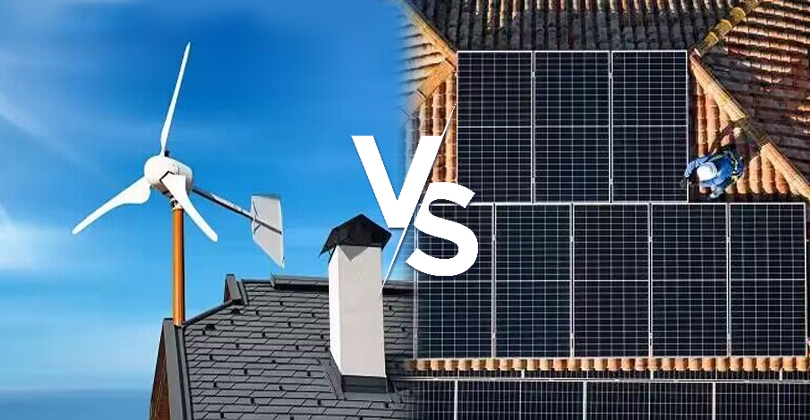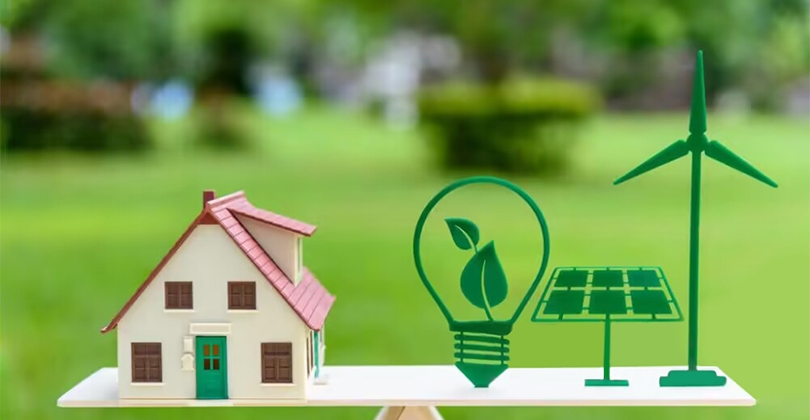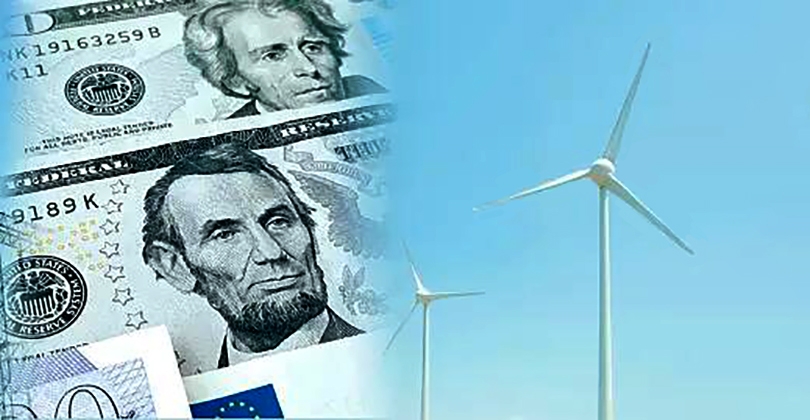I believe most people are confused about whether to choose wind or solar. For the average home, the combined aspects of using a solar energy system are superior to using wind energy. Below Power Home will analyse the various influencing factors.

A small solar system is very cost-effective for addressing lighting issues. However, if it is to power all household appliances, the cost can be quite high. Large wind turbines are more suitable for coastal areas, plains, and mountainous regions with good wind resources. The cost of large wind turbines is too high for ordinary households, which can only install wind turbines below 1000W. For these turbines to generate electricity effectively, two essential conditions are needed: 1. The wind speed must reach 5-6 levels. If it is too low, the turbine will generate almost no power, and if it is too high, it can damage the controller and the turbine. 2. There must be long-term continuous wind with a strength of 5-6 levels. Otherwise, the turbine's power generation efficiency will be very low.
Other factors to consider include:
- Local policies: Is it more cost-effective to generate your own power for personal use, sell the excess to the grid, or invest in energy storage?
- Finding installation personnel and understanding the installation plan: Is it better to have a rooftop or ground-mounted system? What is the optimal installation angle and support structure? Also, consider after-sales maintenance.
- Budget: How much are you willing to spend, and how many years will it take to recoup the costs?
The advantages of solar power include: During hot summer days, households often use air conditioning, which marks the peak electricity usage period of the year. This is also the peak production period for solar power. Installing solar panels on the roof reduces the amount of sunlight hitting the roof, making the indoors cooler and consequently reducing air conditioning costs. Moreover, solar power systems have a long lifespan and low maintenance costs, making them generally more advantageous than wind power. This holds true for most regions, except for areas with very little sunlight.
Below is a detailed analysis of solar and wind energy.
Basic Facts About Solar and Wind Energy
- Solar Energy: Solar energy is a technology that uses solar panels to convert sunlight into electricity. Since solar panels need to be directly exposed to sunlight to convert energy, their efficiency is influenced by environmental factors. In theory, the efficiency of solar panels can reach about 30%, but the actual efficiency is much lower due to factors such as light intensity, temperature, and shading. Additionally, the manufacturing cost of solar panels is high, so there are still some technical and economic limitations.
- Wind Energy: Wind energy is a technology that converts wind into electricity. Unlike solar energy, wind energy conversion is not affected by environmental factors. Its efficiency mainly depends on wind speed and the size of the wind farm. Currently, various wind turbines have been developed to suit different wind conditions. According to statistics, the efficiency of wind turbines ranges from 25% to 40%, and their actual application results are significant.

Comparison of Solar and Wind Energy
Although both technologies have their advantages and disadvantages, the application of solar and wind energy requires consideration of environmental factors, usage locations, and costs. In terms of overall efficiency, wind energy generation currently produces more power output than solar energy generation. However, both energy sources have their advantages in terms of applicability and environmental benefits. Wind energy generation is only suitable for open areas and large wind farms, while solar energy can be used in various settings, including rooftops, walls, and car tops. Although the manufacturing cost of solar panels is high, the cost of solar technology is expected to gradually decrease over time.
Which is Better: Solar Power or Wind Power?
As two major renewable energy sources, solar power and wind power have always been in the spotlight. So, which one is better?
Resource Distribution
- Solar Power: Solar power is a technology that converts solar radiation into electricity using the photoelectric effect. Since solar radiation is widely distributed, solar power has broad applicability. Whether in tropical, subtropical, temperate, frigid zones, or in mountainous, plain, desert, and ocean regions, solar power can overcome geographical limitations and generate electricity at any time and place.
- Wind Power: Wind power converts wind energy into electricity using wind turbines. Due to the regional distribution of wind, the applicability of wind power is more limited compared to solar power. Wind resources are mainly concentrated in coastal areas, mountains, and grasslands. Regions like the coasts of Northern Europe, North America, and parts of China such as Inner Mongolia and Xinjiang have abundant wind resources with significant development potential. In other areas, where wind is weaker or less stable, the utilization of wind power is relatively low.
Overall, the resource distribution of solar power is more extensive, allowing for global electricity generation, whereas wind power's resource distribution is regionally restricted to specific areas.
Power Generation Efficiency
- Solar Power: Solar power generates electricity by using solar radiation. When sunlight hits a solar cell, photons interact with the material to excite electron movement, thus generating electricity. The efficiency of solar power is influenced by the intensity of solar radiation, the choice of solar cell materials, and the configuration of the power generation system. Currently, the efficiency of solar power is continually improving, with monocrystalline silicon cells achieving efficiencies of up to 20%-22%.
- Wind Power: Wind power converts wind energy into mechanical energy through wind turbines and then into electricity. The efficiency of wind power is influenced by wind speed, turbine diameter, and rotational speed. As wind speed varies, the output power of wind turbines also fluctuates. Due to the instability of wind speeds, wind power efficiency and stability are relatively lower, although continually improving. The world's largest wind turbines currently achieve energy utilization efficiencies of up to 50%.
Overall, while wind power efficiency may still lag behind solar power, it has substantial potential in regions with abundant wind resources and is expected to improve with technological advancements.
Cost
- Solar Power: The cost of solar power is composed of several factors, including solar panels, electronic equipment, and system design. The primary factor is the price of the solar panels. With continuous technological advancements and improvements in production processes, the price of solar panels is steadily decreasing. Currently, the cost of solar power has dropped to about $0.1 per kilowatt-hour, comparable to or even lower than the cost of fossil fuels.
- Wind Power: The cost of wind power is mainly determined by the price of wind turbines and maintenance costs. Despite technological advancements and economies of scale reducing the price of wind turbines, wind power still has a relatively high electricity price, currently around $0.3 per kilowatt-hour. The primary reason for this is the significant variation in wind speeds, which requires expensive energy storage equipment and increases maintenance costs, affecting the competitiveness of wind power.
In terms of cost, solar power holds a certain advantage.

Future Prospects
- Solar Power: Solar power, as an energy source with high efficiency, cleanliness and renewability, has a broad prospect in the future energy structure. With the continuous progress of technology and the improvement of the industrial chain, the cost of photovoltaic power generation will continue to decline and the efficiency will continue to improve. In particular, the emergence and application of new solar cell technologies, such as quantum dot solar cells and chalcogenide solar cells, will further improve the efficiency and competitiveness of photovoltaic power generation.
- Wind Power: Wind power is a mature clean energy technology that has been widely promoted and applied worldwide. In the future energy structure, wind power will continue to play a crucial role. Especially in the offshore wind sector, where wind resources are more abundant and installation and maintenance costs are relatively lower, the development potential in offshore wind energy is substantial.
Photovoltaic power generation and wind power generation have their own advantages and disadvantages, and it is impossible to judge which one is better out of thin air. It is necessary to start from the actual situation, taking into account the distribution of resources, power generation efficiency, cost and development prospects and other factors, and make a choice according to the actual situation. But whether it is photovoltaic power generation or wind power generation their common point is that they are clean, renewable energy, is the main component of the future energy structure.
(1).png)
(1).png)